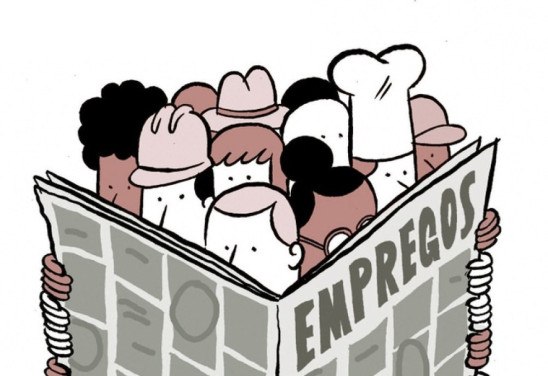
Brazil will probably end 2022 with an unemployment rate of at least 11%, representing about 12 million people unemployed — and without recovering the real income from work, currently damaged by the growth of inflation. This is what specialists consulted by Valor predict.
Analysts with Tendências, XP, Ativa, LCA and Fundação Getulio Vargas (FGV) unanimously say that economic projections has deteriorated this year, and the same happened with the conditions necessary for a sustainable recovery of employment. On top of a more unfavorable macroeconomic environment, the activity is likely to suffer direct and indirect negative effects from an unexpected factor – the war between Russia and Ukraine –, such as higher inflation, economists note.
And they warn: the continued increase in the workforce and the need for families to raise income due to the loss of purchasing power with rising prices will stimulate even more people to look for a job, putting upward pressure on the unemployment rate this year.
At the beginning of 2022, the labor market gave a positive sign, with a decrease of 0.9 percentage points in the unemployment rate in the quarter to January, to 11.2%, according to the Brazilian Institute of Geography and Statistics (IBGE).
For Lucas Assis, an economist at Tendências Consultoria, this decline does not guarantee a continued improvement in employment by the end of the year. A concerning factor released by IBGE, he said, is the already significant number of people — 6.9 million —who want to work more hours to increase income but cannot. This is because the current pace of the economy does not encourage companies to increase hours worked.
Tendências projects zero economic growth in 2022. And he did not rule out still lower world growth and damage in global supply chains of inputs due to the conflict in Eastern Europe. “This [context] may restrain the intention of investments and the impetus of hiring in the country,” he said, suggesting programs to tackle unemployment, especially among young people.
Rodolfo Margato, an economist at XP, also sees zero GDP growth, and adds that any sustainable improvement of the Brazilian labor market is hindered by structural problems. “We have a high informality rate, above 40% [of the employed population], higher than the average of the emerging countries, and low average professional qualification,” he said. As a result, jobs with low qualifications pay less and, consequently, do not help to increase labor income continuously and sustainably.
“It is difficult to imagine a reversal of income trajectory in real terms [in 2022],” he added. This month, IBGE also unveiled that, even with lower unemployment, in the quarter ending in January the real usual income from work (discounting inflation) fell 1.1% compared to the previous quarter; and fell 9.7% compared to the same quarter of the previous year.
In Mr. Margato’s analysis, a solution to improve the labor market, in the long term, would be to combine continued investments in professional training within an environment with balanced macroeconomic indicators.
The importance of the economic scenario in the employment results was also mentioned by Étore Sanchez, the chief economist of Ativa Investimentos. For him, the effect of the weak economy on employment in 2022 may lead to an unemployment rate of 12.5% by the end of the year — that is, about 13 million unemployed. “The outlook is so bad for growth this year that the labor market will end up reflecting this,” he said, also projecting zero GDP this year.
In general, the labor market reacts with a lag in relation to economic activity, said Bruno Imaizumi, an economist at LCA. But he acknowledged that, today, the situation is different. “In 2022, the labor market is tied to the economic scenario, which is deteriorating.”
The analyst also does not see much room for recovery of jobs because, besides the weaker economy not favoring such action, this movement has already happened in 2021, after cuts in 2020 due to the pandemic. In February 2020, the employed population was 94.7 million, and in December 2021, 95 million, he said.
“We will continue with unemployment rate at this high level,” he said. Mr. Imaizumi also pondered that the picture could be less unfavorable with structural solutions, such as more programs focused on professional qualification.
Rodolpho Tobler, an economist at FGV, agrees. For him, “it is impossible to imagine an unemployment rate below double-digit levels” with structural problems in the labor market, such as high informality and low professional qualification. Like the other specialists, he pointed out that since 2016 the country has not seen an annual unemployment rate below 10%. This resulted in a high level of unemployed people for a long period of time without generating income from work and, thus, “curbing” robust growth in the economy.
“And the war [in Ukraine] can amplify these problems [in employment],” he said. He stressed that the conflict is a factor in raising prices, inhibiting consumption, and thus driving even weaker activity — which hinders job openings.
Source: Valor International
